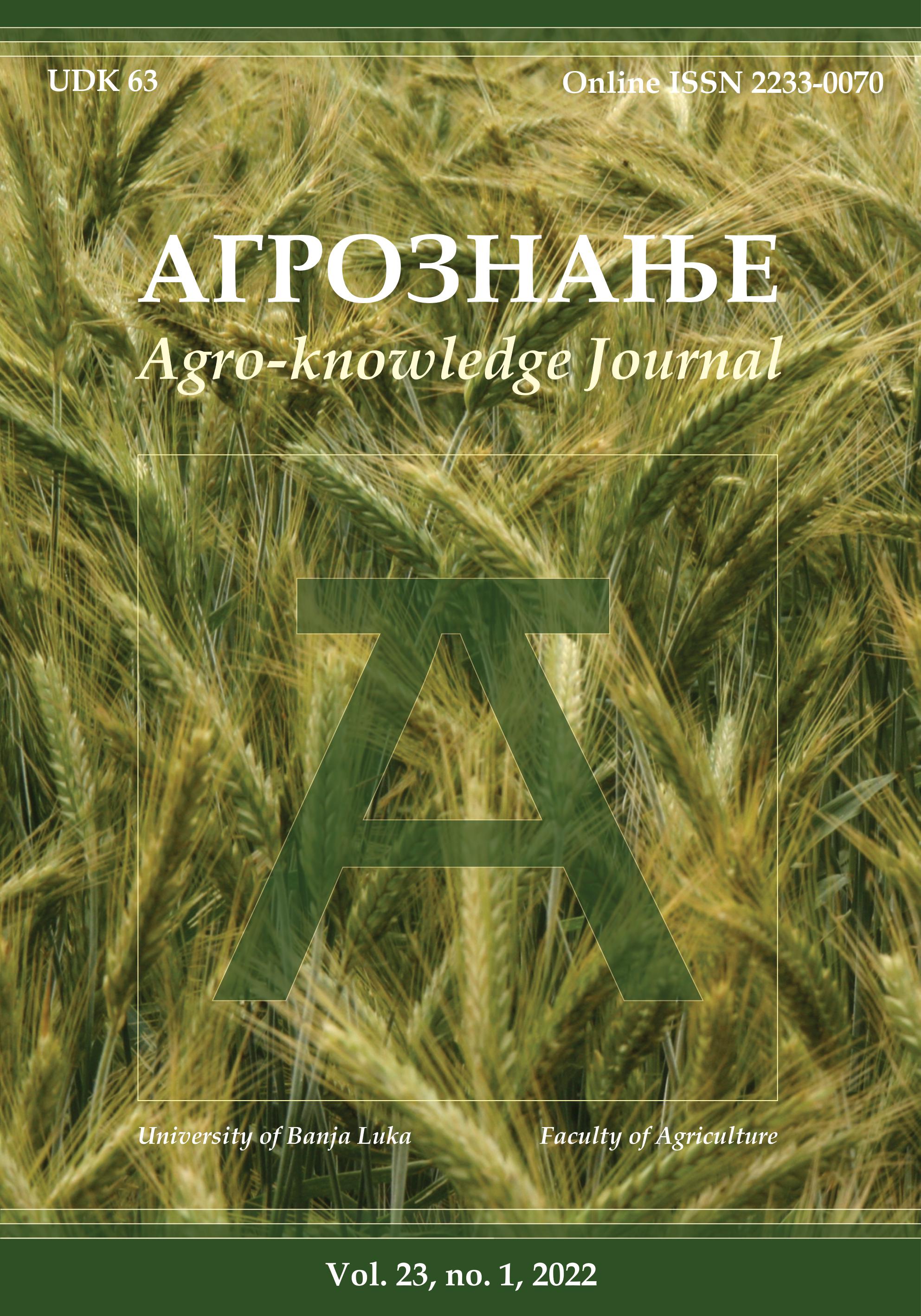Morphometric characteristics and condition indices of stone crayfish Austropotamobius torrentium (Shrank, 1803) from the Mlinska River
Морфометријске карактеристике и кондициони индекси поточног рака Austropotamobius torrentium (Shrank, 1803) из Млинске ријеке
DOI:
https://doi.org/10.7251/AGREN2201033RAbstract
Regarded as a protected species on the IUCN list of endangered species, and classified as data deficient species, the stone crayfish (Austropotamobius torrentium) is one of the five European species from the Astacidae family that lives in freshwater ecosystems across Bosnia and Herzegovina. The aim of this study was to investigate the variability of selected morphometric characteristics of male and female crayfish of the A. torrentium species from the upper reaches of the Mlinska River. The crayfish were sampled in June 2021 when 62 individuals (22 males and 40 females) were caught. They were analyzed fresh in the field and in the laboratory. The treatment included the measurement of 12 morphometric features: total body length (TBL), weight (W), claw length (CLL), claw width (CLW), carapace length (CPL), carapace width (CPW), rostrum length (ROL), rostrum width (ROW), abdominal length and width (ABL, ABW) and telson length and width (TEL, TEW). The mean body length ± SD was 79.05 ± 7.35 in males and 60.54 ± 10.03 mm in females. The mean recorded body weight ± SD was 17.51 ± 8.3 g in males and 7.02 ± 4.41 g in females. Using the linear regression method, a positive correlation was found between body length and weight (♂ R2=0.7644; ♀ R2=0.8222), body weight and claws length (♂ R2=0.876; ♀ R2=0.9661), as well as carapace width and body length (♂ R2=0.7216; ♀ R2=0.8411). Using the T-test, a statistically significant difference of the analyzed morphometric parameters was found between the sexes, which is explained by the pronounced sexual dimorphism of stone crayfish. The calculated values for Condition factor and the Crayfish constant indicate that the males are of better fitness, which is in line with the results of previous research in Europe. Data presented in this paper can serve as a basis for further research of A. torrentium in this area.
Key words: stone crayfish, males, females, morphometric characteristics

